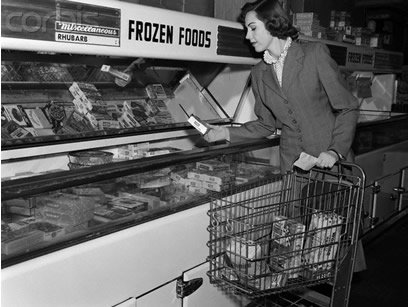In an earlier post we talked about the failure of the city’s green cart experiment-a bad idea that was built on a false premise. The premise? That the areas targeted were underserved “food deserts,” and that siting veggie carts in those areas would lead to greater produce consumption (The field of dreams theory).
The reason for the failure lies with the fact that access to healthier foods is not the insurmountable obstacle that food advocates have said it is-and the entire food desert concept is a myth. This was brought home recently by an incisive NY Times article:
“It has become an article of faith among some policy makers and advocates, including , that poor urban neighborhoods are food deserts, bereft of fresh fruits and vegetables. But two new studies have found something unexpected. Such neighborhoods not only have more fast food restaurants and convenience stores than more affluent ones, but more grocery stores, supermarkets and full-service restaurants, too. And there is no relationship between the type of food being sold in a neighborhood and obesity among its children and adolescents.”
–
Even Kelly Brownell, one of the most vigorous food advocates, sees the futility of the food desert approach: ““It is always easy to advocate for more grocery stores,” said Kelly D. Brownell, director of Yale University’s Rudd Center for Food Policy and Obesity, who was not involved in the studies. “But if you are looking for what you hope will change obesity, healthy food access is probably just wishful thinking.”
What this means is that the green cart experiment-and the city’s “Shop Healthy” program are doomed to failure because their underlying premise is wrong; and any effort to tackle rising rates must be directed not at the supply side of the equation but at the demand side. (see our post for a discussion of the mayor’s new approach).
The main emphasis needs to be shifted to engaging communities and schools in a movement for change that engages their interests and motivates them alter their eating habits-and this new emphasis needs to include the stores themselves as the key stakeholders in the rejuvenation process. Neighborhoods need to see their local food entrepreneurs as heroes for their efforts at not only providing the community with healthier food but also for their example of how to pull oneself up by the bootstraps.
The city also needs to devise ways to make the local foods stores more profitable so that they can hire more locals and increase their efforts at diversifying their product offerings. The main point here is for the city to recognize that the health of the local stores is as vital as the overall health of the community-and that it is inextricably linked to it.
Raising the awareness of poorer communities is no easy task-and poverty itself is a powerful barrier to change. Looking for ways to link entrepreneurism and community-based public education is an interesting method that-if linked to economic incentives around food stamps-can offer a more realistic potential for social change than all of the current failed experiments built on ideologies that are untethered from reality.

{ 0 comments… add one now }